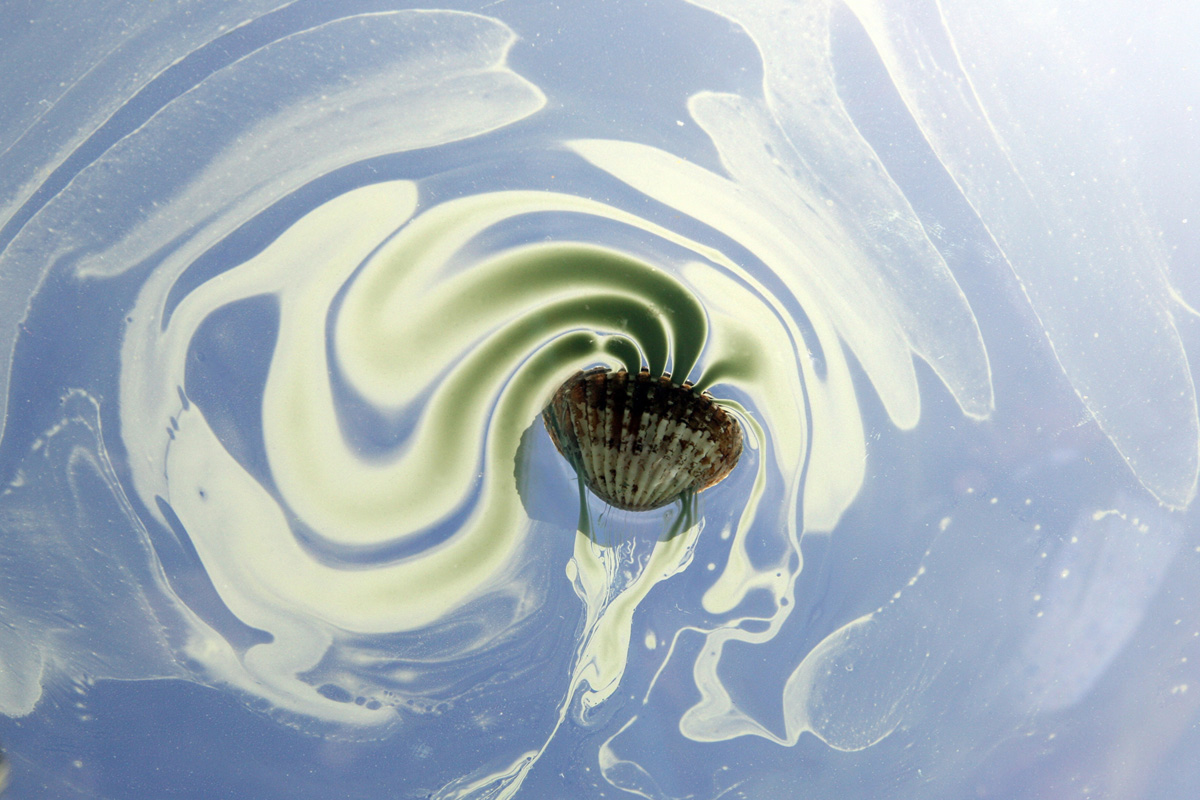 Those even vaguely tuned into the national art scene will be familiar with the work of Mak Remissa, the locally born artist considered by many to be one of the most successful photographers of his generation. It wasn’t long after graduating from Phnom Penh’s Fine Arts School in 1995 that his talent caught the attention of worldwide publications, many at which he has since worked as a photojournalist. At the same time, his fine art photography began exhibiting across Cambodia, Singapore, China, France, Canada, the US, and beyond, recognised for not only its attention to fine detail, but regular themes concerning the environment and conservation. In his latest exhibition, Water is Life, Remissa emphasises the importance of water for animals, vegetation, humans and life on earth.
Those even vaguely tuned into the national art scene will be familiar with the work of Mak Remissa, the locally born artist considered by many to be one of the most successful photographers of his generation. It wasn’t long after graduating from Phnom Penh’s Fine Arts School in 1995 that his talent caught the attention of worldwide publications, many at which he has since worked as a photojournalist. At the same time, his fine art photography began exhibiting across Cambodia, Singapore, China, France, Canada, the US, and beyond, recognised for not only its attention to fine detail, but regular themes concerning the environment and conservation. In his latest exhibition, Water is Life, Remissa emphasises the importance of water for animals, vegetation, humans and life on earth.
“This is an idea I have felt strongly about since a long time ago,” Remissa explains. “Cambodia has a lot of rivers, lakes, canals, etc. In the raining season we have plenty of water, but in the dry season people cannot find water for their agriculture and in some places in the countryside the residents are not able to find water to drink. So this series shows the importance of water. We really need it, and the water has a lot of lives in it – you can see them in the pictures.”
The 18 images in the series predominantly centre on a single water-dependent creature – fish, frogs, turtles, rays, and molluscs among them – each secreting or spattered with a luminous and colourful oily liquid, floating in an otherwise fresh, clear pool of water. On first glance, the photographs are pure beauty, with swirling fluorescent liquids creating psychedelic patterns, and resolutions so clear that every water droplet could easily trickle off the canvas at any moment. But on closer inspection and further musing, a certain uneasiness emerges. A frog appears to be less swimming than drowning, suffocated by the toxic-green, oily substance by which it is slowly being engulfed. A conch shell oozes an impossibly organic viscous slime.
Although known most widely for his photography, to generate this simultaneously beautiful, yet unsettling effect, Remissa used a combination of various media to create the series.
“I used oil colors with dead creatures from fresh and sea water. No animals were killed; the animals in the pictures had already died before I had bought them from the market.” Remissa adds slightly superfluously, albeit comfortingly, “Except the people in the pictures – they are alive, just photographic effects only.”
Although Remissa doesn’t necessarily consider himself an activist, environmental themes feature strongly in many of his works, and he believes that artists like himself are in a position in which they can, and should, use their art as a platform to advocate such issues.
“I don’t think I am an environmental activist. As you know, I am an artist, so there are many human issues waiting for me to create art about. For another environmental issue, I created Flamed Forest, a series focusing on forest conservation,” Remissa says. “We are artists. We should use our arts to support important social, political and environmental issues, and I encourage all the artists over the world to participate in these issues. I will also be donating some money made from the sales of this photographic collection to non-profits dedicated to educating and sustaining water resources.”
Beyond stimulating consciousness within the wider artistic community, Remissa hopes to inspire and promote mindfulness among audiences who view his latest exhibition.
“I hope the audiences will rethink about water, as water is very important for people, animals and nature – they cannot live without water. They should keep the water clean and useable forever, everywhere on earth.”
Water is Life by Mak Remissa will show until Sunday June 21 at the Lotus Pond Gallery of The Plantation, #28 St. 184.
